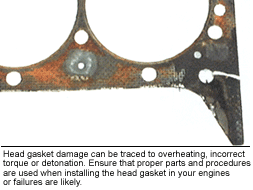
So guess it comes down to whether I want to roll the dice today.LOL. Plugs look great, all cylinders look the same, all the intake valves look the same and intake valve clearances are within spec. Unfortunately, I don't know of a way to do a coolant pressure test with the intake manifold removed (would have to design and build a blank off plate over each head and the upper radiator hose I think), which means I would not be able to visually see if it's leaking or not. I may do a compression test, but if the leaking was only external that would test good. This one shows no such signs of coolant to internal cylinder leaking, only this external leaking. I ultimately used some of the stop-leak which worked great (and I hate using that stuff) but eventually the leak came back as the gasket eroded/cracked. My old 1996 Tacoma (sold a couple years ago) went 2+ years with a small leak of coolant into the cylinder, steamed on startup from time to time. Gentex Auto dim + Compass + Temp, garage,rearview mirror
HEAD GASKET LEAKING COOLANT EXTERNALLY SERIES
Raised exhaust tail pipe to 2" below body lineĭrilled slotted brakes, High carbon steel (MUST DO)ĮBS green stuff 7000 series pads(MUST DO)Ģ002 4Runner functional hood scoop cut into Tacoma hood, Now running Dynopro ATM mud and snow tires Michelin tires LTX, ( that last 100,000 miles)
HEAD GASKET LEAKING COOLANT EXTERNALLY PLUS
Old coolant becomes acidic and its corrosion inhibitors degrade, leading to many problems that are expensive and easily avoidable.Joined: Member: #113940 Messages: 10,019 Gender: Male First Name: John Denver Vehicle: 97 reg cab, v6 5sp 300hp supercharged, Methonal Injection, 725,001 plus miles, Original Owner V6 5sp,RegCab,TRD Supercharger, 1.9” pulley, methanol injectedĢ004 DESNO fuel injectors, zero ping ping, On the V-6 engines, it’s recommended that the fastening bolts also be replaced.Ī final thought: Regardless of the coolant type used or brand of vehicle, it’s a good idea to flush and renew engine coolant every three or four years, shortcutting the maintenance schedule. I’d insist on a highly experienced technician who uses the latest gasket design available and uses meticulous, correct practices for cleaning sealing surfaces, cleaning and sealing bolts and threads, and fastener torque/sequence. Renewing the intake gaskets requires removal of the intake manifold, distributor and air conditioning compressor. An external coolant leak might be Band-Aided for a while with use of a leak stop product such as AlumAseal or Bar’s Leaks, but keep a close eye on engine oil in case the leakage migrates. If it’s internal, with milky engine oil, the repair needs to be made immediately. You didn’t mention where the coolant was leaking to. GM released an improved intake manifold gasket design, and aftermarket/OEM gasket manufacturers such as Fel-Pro have improved design gaskets, but repeat problems can still occur. Some theorize controversial orange Dex-Cool coolant is the culprit, as the composition rubber intake gasket deteriorates where it is exposed to the coolant.

Your particular engine uses fewer bolts securing the intake-to-head junction than in the past, possibly exacerbating sealing issues. Aluminum intake manifolds bolted to cast-iron cylinder heads have issues as well, as the two metals expand and contract at differing rates. Engines that employ plastic intake manifolds are subject to manifold cracking and gasket sealing problems. Auto (360p LQ) Why Is My Pressure Washer Leaking Oil 3 Superb Facts To Fix It However, when the head gasket blows, it usually leaks oil into the engine cylinders or mixes it with the coolant. There are a variety of causes and theories of failure. Coolant leaking into the crankcase, or the internal engine cavity, is by far the worst of the bunch, as the diluted oil can’t provide proper lubrication to vital engine parts. It could also leak exhaust, externally or elsewhere. This kind of failure also can leak coolant externally - you would notice coolant loss and a sweet odor - or internally, creating milky oil that leads to engine failure. In a V-type engine, coolant, exhaust and incoming air and fuel are individually directed to or between the cylinder heads, and leakage of any of these can occur either internally or externally.Ī failed intake manifold or cylinder head gasket can leak air into the engine, which causes rough running, or crankcase vapors into the intake, which causes excessive oil consumption and fouled spark plugs. Any insight into this issue?Ī: Leaking intake manifold gaskets are a fairly common problem on several GM V-6 and V-8 engines built during the past two decades.

I was shocked at the price quoted for the repair and am not sure I understand why there would be coolant in my intake manifold in the first place. Q: I was just informed the coolant leak in my GMC Yukon is from a leaking intake manifold gasket.


 0 kommentar(er)
0 kommentar(er)
